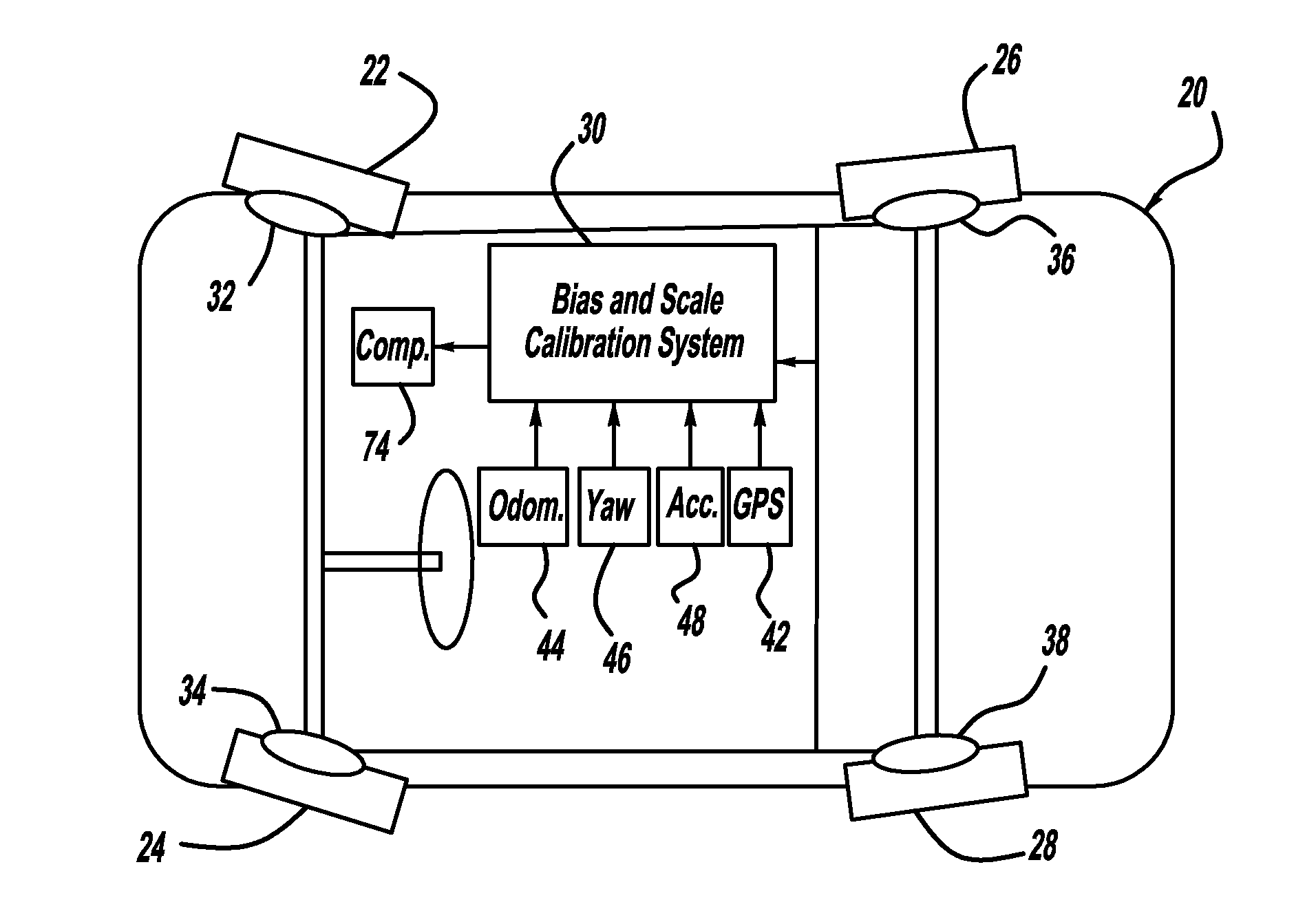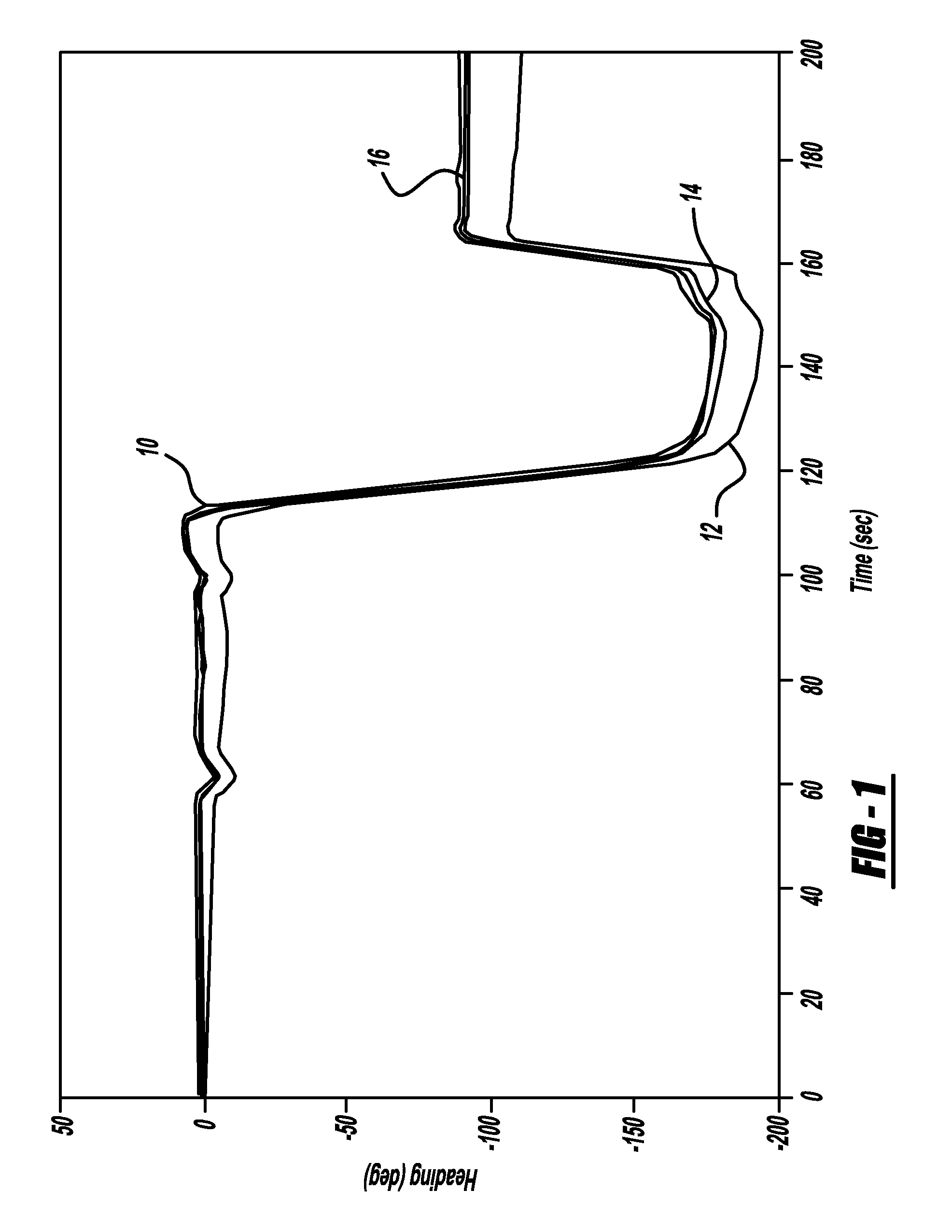GPS-based in-vehicle sensor calibration algorithm
- Summary
- Abstract
- Description
- Claims
- Application Information
AI Technical Summary
Problems solved by technology
Method used
Image
Examples
Embodiment Construction
[0013]The following discussion of the embodiments of the invention directed to a system and method for providing inertial sensor bias and scale calibration to provide accurate vehicle heading readings is merely exemplary in nature, and is in no way intended to limit the invention or its applications or uses.
[0014]The present invention proposes a system and method that uses GPS signals to calibrate the scale and bias of a heading rate sensor, such as a yaw-rate sensor, to maintain the accuracy of the inertial sensor so as to allow the use of automotive-grade yaw-rate sensors for navigation, positioning, heading and enhanced vehicle stability control functions when the GPS signals are unavailable. The algorithm of the invention calibrates both bias and scale factor using the same set of data, and does not require specific vehicle maneuvers to be performed to achieve calibration. In one non-limiting embodiment, a yaw-rate and GPS heading data set at a 1 Hz or greater data rate that was...
PUM
 Login to View More
Login to View More Abstract
Description
Claims
Application Information
 Login to View More
Login to View More - R&D
- Intellectual Property
- Life Sciences
- Materials
- Tech Scout
- Unparalleled Data Quality
- Higher Quality Content
- 60% Fewer Hallucinations
Browse by: Latest US Patents, China's latest patents, Technical Efficacy Thesaurus, Application Domain, Technology Topic, Popular Technical Reports.
© 2025 PatSnap. All rights reserved.Legal|Privacy policy|Modern Slavery Act Transparency Statement|Sitemap|About US| Contact US: help@patsnap.com



